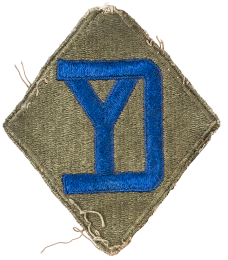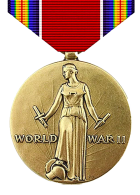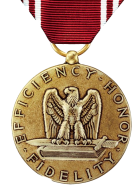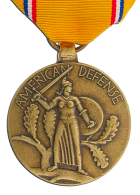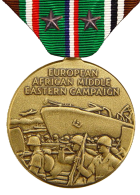Louis C. Graziano was born on February 6, 1923, in East Aurora, New York. He entered active service on January 22, 1943, at Fort Niagara, New York, and was honorably discharged on January 3, 1946, at Fort Dix, New Jersey.
Louis served as a Master Sergeant in various headquarters units, including Special Troops Headquarters, Command Headquarters, OISE Section Com Z during wartime. At the time of his discharge, he was assigned to Headquarters Company, 102nd Field Artillery Battalion which was assigned to the 26th Infantry Division.
As a Master Sergeant, Louis C. Graziano led a platoon of communications specialists, responsible for ensuring reliable command and control for high-ranking personnel. He supervised a team of 35 men, overseeing various tasks such as plumbing, carpentry, electrical work, masonry, road building, and basic construction.
D-Day
On D-Day June 6, 1944, Louis and his men landed on Omaha Beach in the third wave near the St. Laurent-Vierville exit in Normandy, France. Amidst the chaos, Louis abandoned a truck full of gasoline and joined the fight, taking positions at the base of a cliff with another soldier. He used a flame thrower to eliminate a German machinegun nest and fired flares to direct allied ship fire towards other enemy positions higher up the cliff.
After the successful landing, Louis and the Allied forces advanced beyond the shores of Normandy, liberating the French City of St Lo and eventually reaching the City of Reims. In Reims, Louis played a crucial role in history when he was ordered by General Thrasher to install General Eisenhower's phone line. This phone line was essential for real-time communication and contributed to a more timely victory for the Allies.
Battle of the Ardennes
During the "Battle of the Bulge," a dangerous mission led Louis and his captain to search for an element of the 3rd Armored Division to aid the encircled troops near Bastogne, Belgium. They successfully found the lost armored element but suffered frostbite in the process. Louis returned to Reims for recovery.
German surrender
In Reims, the historic event of Germany's unconditional surrender took place in the "Little Red Schoolhouse" where General Eisenhower had his headquarters. Louis was present in the room as General Yodl of the German Army signed the articles of surrender. U.S. General Walter Bedell Smith signed on behalf of General Eisenhower, and General Ivan Susloparov represented the Soviet High Command. French Major-General François Sevez served as the official witness. Louis C. Graziano is likely the last surviving witness to this momentous event.
Louis received the Army Good Conduct Medal, the European African Middle East Campaign Medal with 2 Bronze Campaign Stars for Northern France and Rhineland, and the World War II Victory Medal. He was also qualified as a Rifle Sharpshooter and received a Certificate of Merit for his achievements as Utilities Foreman.

